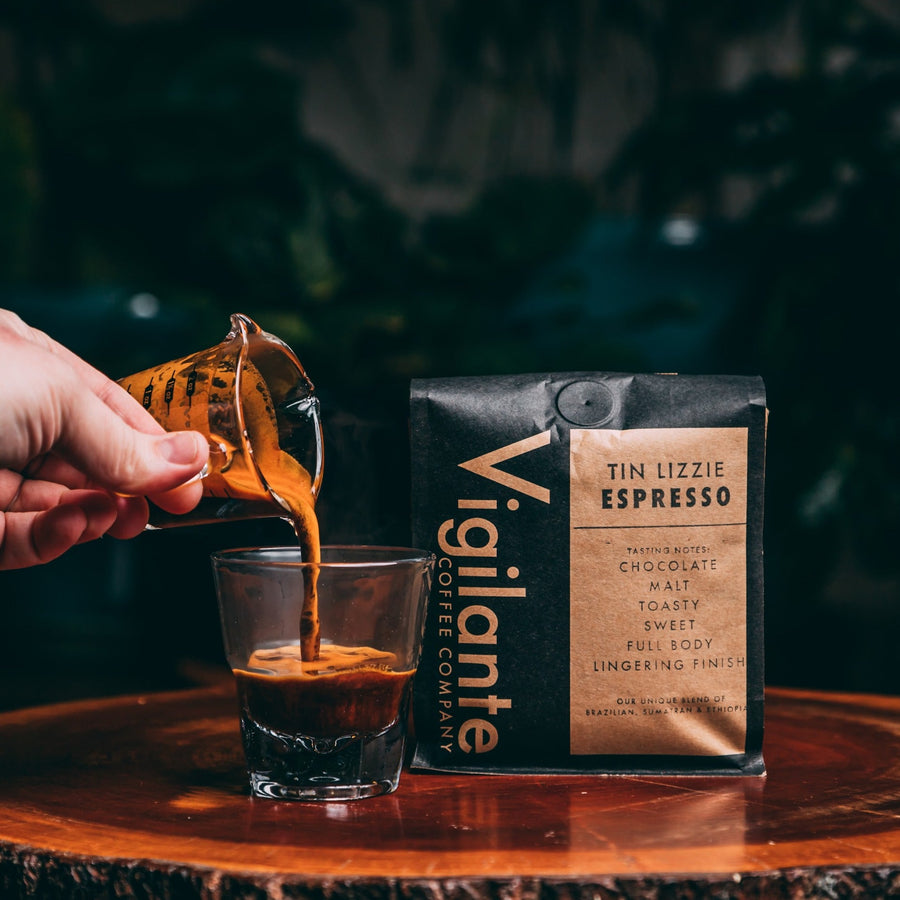Why SOE Single Origin Espresso Is Highly Rated Among Baristas
Why SOE Single Origin Espresso Is Highly Rated Among Baristas
Blog Article
Recognizing Coffee Beans: the Journey From Espresso to Blended Coffee Beans

The Origins of Coffee: A Global Viewpoint
While you could think of coffee as a modern staple, its beginnings map back centuries, intertwining with cultures throughout the world. The story begins in Ethiopia, where tale claims a goat herder named Kaldi uncovered the energizing impacts of coffee beans after observing his goats romping energetically after eating them.
As trade paths broadened, coffee made its method to Europe in the 17th century, promptly acquiring appeal. Each culture added its one-of-a-kind twist to coffee preparation, enhancing its background.
Growing and Harvesting of Coffee Beans
As coffee's journey evolved, the focus changed to the farming and harvesting of details bean selections, specifically those made use of for coffee. You'll locate that coffee beans commonly originate from Arabica or Robusta plants, each offering distinctive tastes. The excellent expanding problems consist of high altitudes and rich, well-drained dirt, which boost the beans' top quality.
During the harvest, selecting methods differ. Timing is crucial; you desire to collect when the cherries get to peak ripeness for maximum flavor.
Once collected, the beans are planned for processing, which is vital in identifying their final preference. Understanding the growing and harvesting procedures provides you understanding into what enters into your preferred espresso, improving your admiration for every cup.
Handling Techniques: From Cherry to Bean
Since you've found out about harvesting coffee beans, let's discover exactly how those cherries transform right into the coffee beans you love. You'll see just how various harvesting techniques influence taste, followed by the crucial actions of fermentation and drying. We'll damage down the milling and grading procedure that identifies your coffee's top quality.
Gathering Methods Described
When it pertains to coffee, understanding harvesting techniques is crucial, because they straight affect the flavor and top quality of the beans you take pleasure in. There are 2 primary techniques: careful selecting and strip selecting. Selective choosing includes hand-picking just ripe cherries, guaranteeing you obtain the very best high quality beans. This approach often results in a richer taste account, though it's even more labor-intensive. On the various other hand, strip picking means gathering all cherries simultaneously, no matter perfection. While it's quicker and cheaper, this can cause a mix of tastes, affecting the end product. Eventually, the choice of harvesting method can significantly influence your coffee experience, so it's worth understanding exactly how those beans made it to your cup.
Fermentation and Drying Out
After gathering, the next action in handling coffee beans play a significant function fit their flavor. You'll find that fermentation is vital, as it aids damage down the mucilage bordering the beans, improving their taste profile. Depending on the approach, this procedure can last from a few hours to several days, with differing outcomes based upon temperature level and moisture.
As soon as fermentation is full, drying out adheres to, which is just as essential. You can select from mechanical or sun-drying drying out methods. Sun-drying permits the beans to take in flavors from the setting, while mechanical drying guarantees regular wetness levels no matter weather condition. Proper drying out is vital to prevent mold and protect the beans' high quality, eventually affecting your mug of coffee.
Milling and Grading Refine
As fermentation and drying set the phase for taste development, the milling and grading procedure assurances that only the most effective coffee beans make it to your mug. This phase includes eliminating the outer layers of the coffee cherry, including the parchment and husk. After milling, the beans are arranged by size and weight, ensuring an uniform top quality. You'll locate that grading aids recognize issues and categorize beans, which influences taste and scent. Top notch beans obtain a greater grade, leading to a richer coffee experience. As soon as rated, the beans await packaging and shipping, protecting their distinct features. This thorough procedure is vital for providing the outstanding taste you appreciate in every sip of your preferred brew.
Roasting Techniques: Unlocking Flavor Potential
When you roast coffee beans, the technique you select can significantly affect the taste account. Understanding the connection in between time, temperature level, and toasting strategies is essential to disclosing the possibility of your brew. Allow's explore exactly how these aspects come together to develop the ideal mug.
Roasting Methods Explained
While you could assume that all coffee toasting techniques generate the exact same results, the reality is that each strategy discloses special taste possibilities in the beans. Drum roasting utilizes a rotating drum to uniformly disperse heat, improving caramelization and generating a balanced taste. Air roasting, on the various other hand, distributes warm air around the beans, advertising a lighter roast with noticable level of acidity.

Effect On Taste Account
Various toasting techniques not just influence the process but also considerably influence the taste profile of the coffee beans. Dark roasts, on the various other hand, bring out strong, smoky flavors, in some cases concealing the bean's special features. Recognizing these subtleties assists you appreciate the virtuosity behind your mug of coffee, improving your general experience with every sip.
Time and Temperature Elements
To release the full taste possibility of coffee beans, both time and temperature level during the roasting procedure play substantial functions. When roasting, you'll find that higher temperature levels can promptly establish flavors, however if you rush it, you may end up with charred notes. On the other hand, reduced temperature levels permit a much more progressive flavor growth, showcasing the beans' one-of-a-kind qualities.

Timing is simply as essential; expanding the roast as well long can lead to a loss of level of acidity and brightness, while as well short a roast may leave the beans underdeveloped. Finding that pleasant area calls for method and experimentation. By adjusting these variables, you can reveal the abundant, complicated flavors concealed within each bean, producing an absolutely exceptional coffee experience.
The Art of Blending: Crafting Special Coffee Profiles

Beginning by choosing a base coffee that provides a strong foundation. After that, pick corresponding beans to enhance details flavor notes. As an example, an intense Ethiopian bean can bring fruitiness, while a rich Brazilian coffee adds body. Trial and error is vital-- do not be afraid to adjust ratios up until you discover your excellent profile.
As you mix, remember that each mix informs a tale. You're not simply making coffee; you're developing an experience. Take your time, taste frequently, and enjoy the journey of uncovering your trademark mix - Single Origin Espresso.
Developing Techniques: Exactly How Preparation Affects Taste
Mixing coffee opens a domain name of taste possibilities, however just how you brew that blend can significantly influence your final cup. Different brewing methods draw out one-of-a-kind tastes and fragrances, so it's important to select carefully. A French press permits oils and debris to stay, producing a rich, full-bodied experience. On the other hand, a pour-over highlights the coffee's clearness and brightness, excellent for showcasing delicate notes.
Coffee, with its high pressure, creates a concentrated shot that emphasizes sweetness and crema. If you choose a lighter brew, take into consideration a chilly brew technique; it generates a smooth, less acidic preference.
Adjusting variables like water temperature, grind dimension, and brew time can transform your coffee's account. Embrace the art of brewing to find click here for info the tastes hidden in your coffee blends.
The Future of Coffee: Sustainability and Technology
As the coffee market advances, sustainability and development are becoming essential for attending to ecological obstacles and conference consumer needs. You'll discover that more coffee firms are adopting environment-friendly techniques, from sourcing beans morally to carrying out lasting farming methods. These changes not just help the world however likewise boost the quality of the coffee you enjoy.
You might see technologies like naturally degradable packaging and water-saving developing approaches that minimize waste. Advanced technology, such as blockchain, is likewise becoming prominent, making sure openness in the supply chain, which enables you to trace your coffee back to its beginnings.
Additionally, purchasing regional neighborhoods and sustaining farmers via reasonable trade initiatives cultivates a more sustainable coffee environment. As you drink your following mug, bear in mind that your choices can add to a brighter future for coffee. By going with lasting brand names, you're not simply appreciating a drink; you're making a favorable influence on the world.
Frequently Asked Concerns
What Is the Difference Between Arabica and Robusta Beans?
Arabica beans are smoother, sweeter, and have a greater level of acidity, while robusta beans are more powerful, more bitter, and include more caffeine. You'll discover these distinctions in taste and scent when brewing your coffee.
Exactly How Does Altitude Affect Coffee Bean Taste?
Altitude effects coffee bean flavor substantially. Higher altitudes generate beans with brighter level of acidity and complicated tastes, while lower altitudes typically produce beans that are larger and much less nuanced. You'll notice these differences in your cup!
What Are the Wellness Conveniences of Drinking Coffee?
Drinking coffee can increase your power, enhance psychological focus, and even improve physical performance. Related Site It's abundant in antioxidants, might reduce the risk of particular illness, and can promote a healthier metabolic process when eaten in moderation.
Can Coffee Beans Be Reused for Brewing?
Yes, you can recycle coffee beans for brewing, but the flavor may be weaker. If you delight in experimenting, attempt reusing them in various methods, like cool mixtures or including to smoothies for an added kick.
Just how Should I Store Coffee Beans for Quality?
To keep your coffee beans fresh, keep them in a closed container in a cool, dark area. Prevent revealing them to dampness, heat, or light, as these aspects can swiftly deteriorate their flavor and scent.
Recognizing Coffee Beans: the Journey From Coffee to Blended Coffee Beans.
Currently that you've discovered concerning gathering espresso beans, allow's discover exactly how those cherries change into the coffee beans you like.When you roast coffee beans, the approach you select can dramatically impact the flavor account - Single Origin Espresso.While you could believe that all coffee toasting techniques generate the same outcomes, the fact is that each method reveals unique flavor capacities in the beans.Various roasting methods not only affect the procedure but additionally substantially affect the taste profile of the coffee beans
Report this page